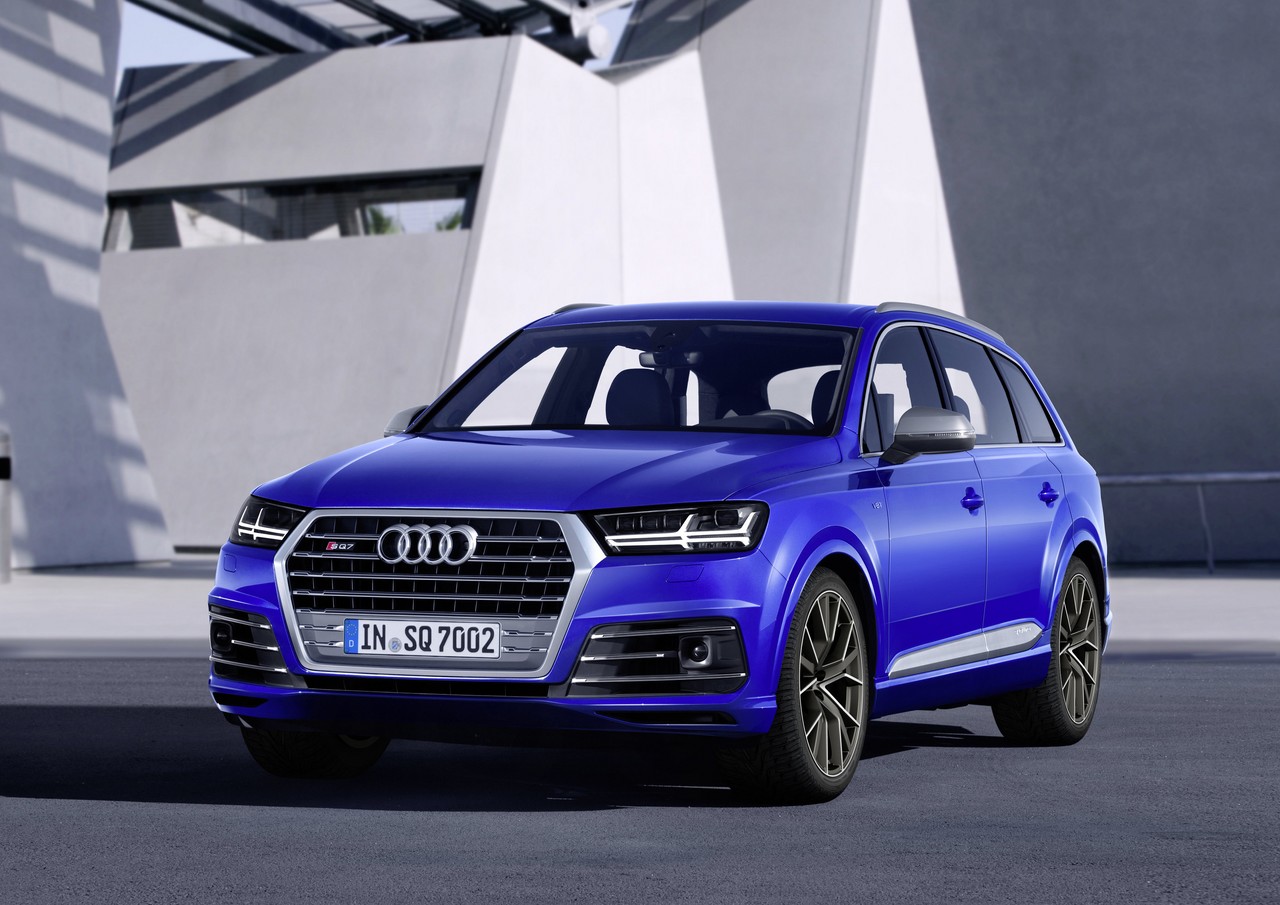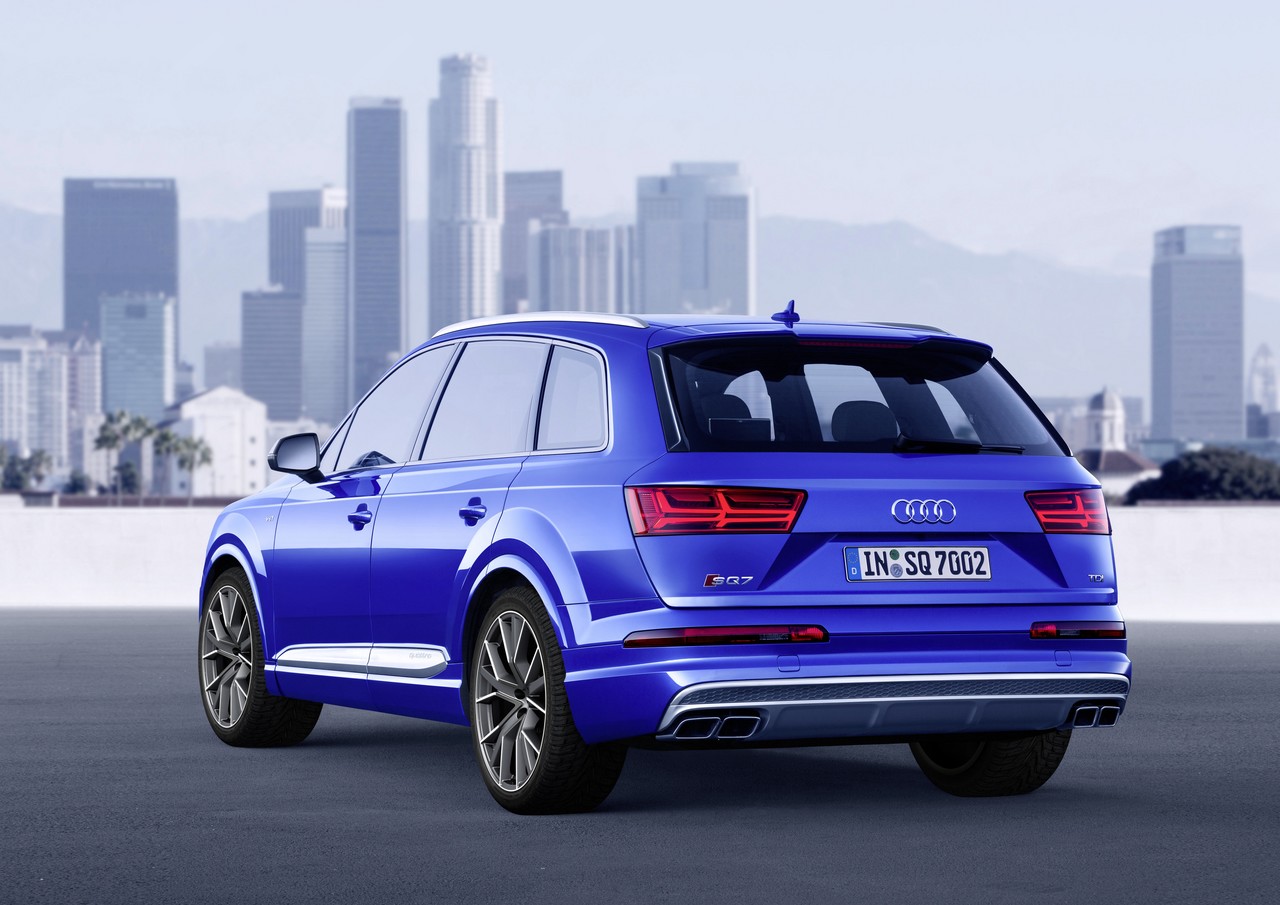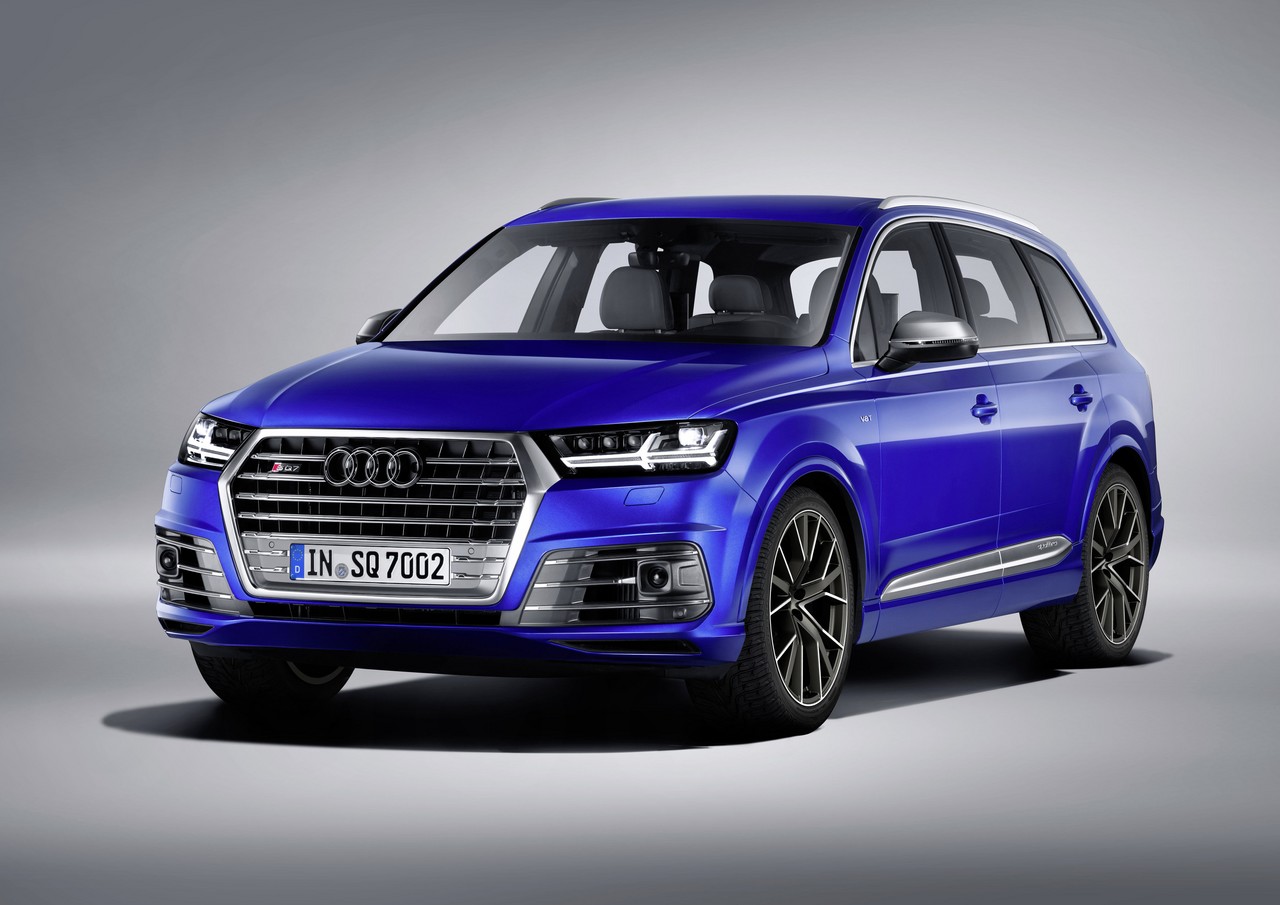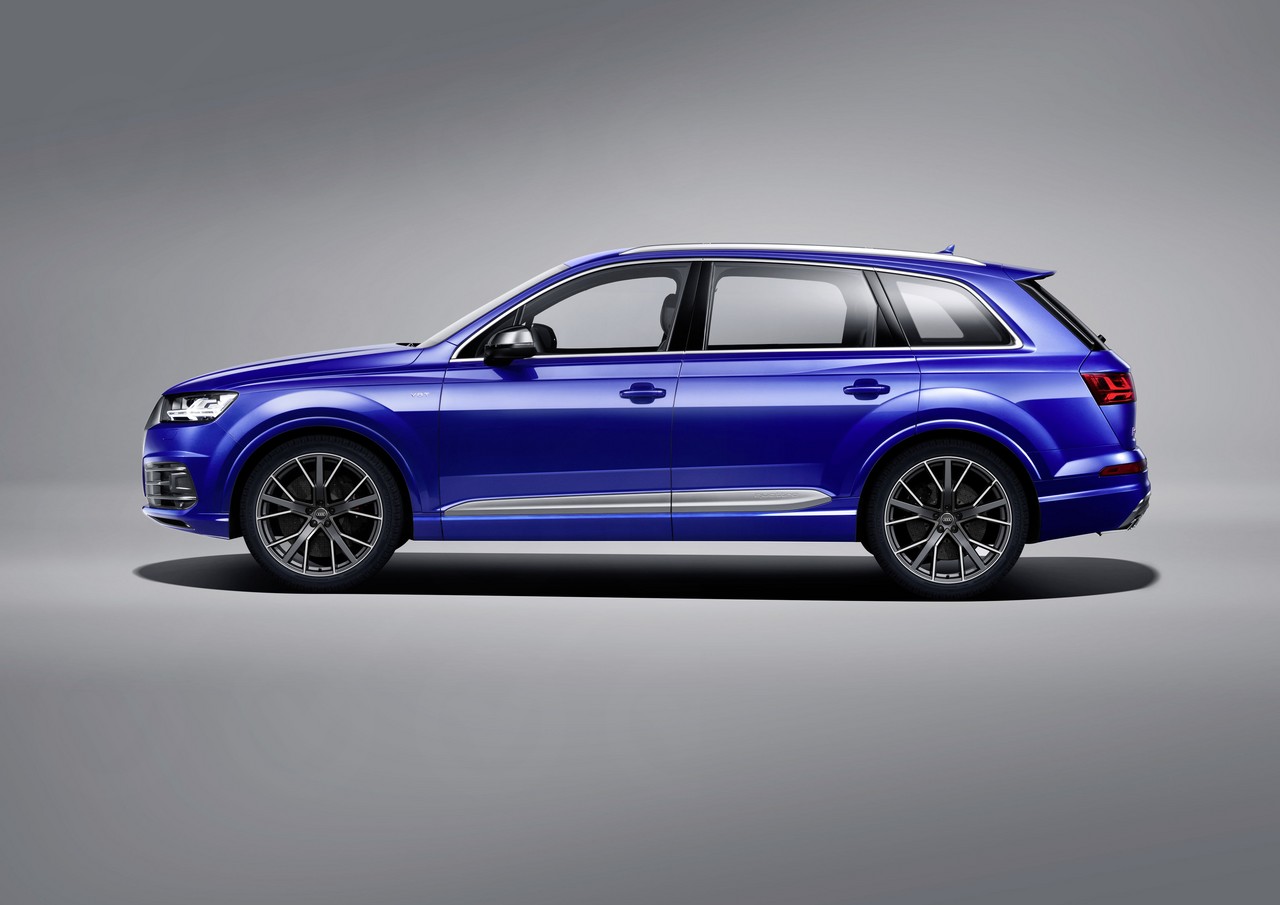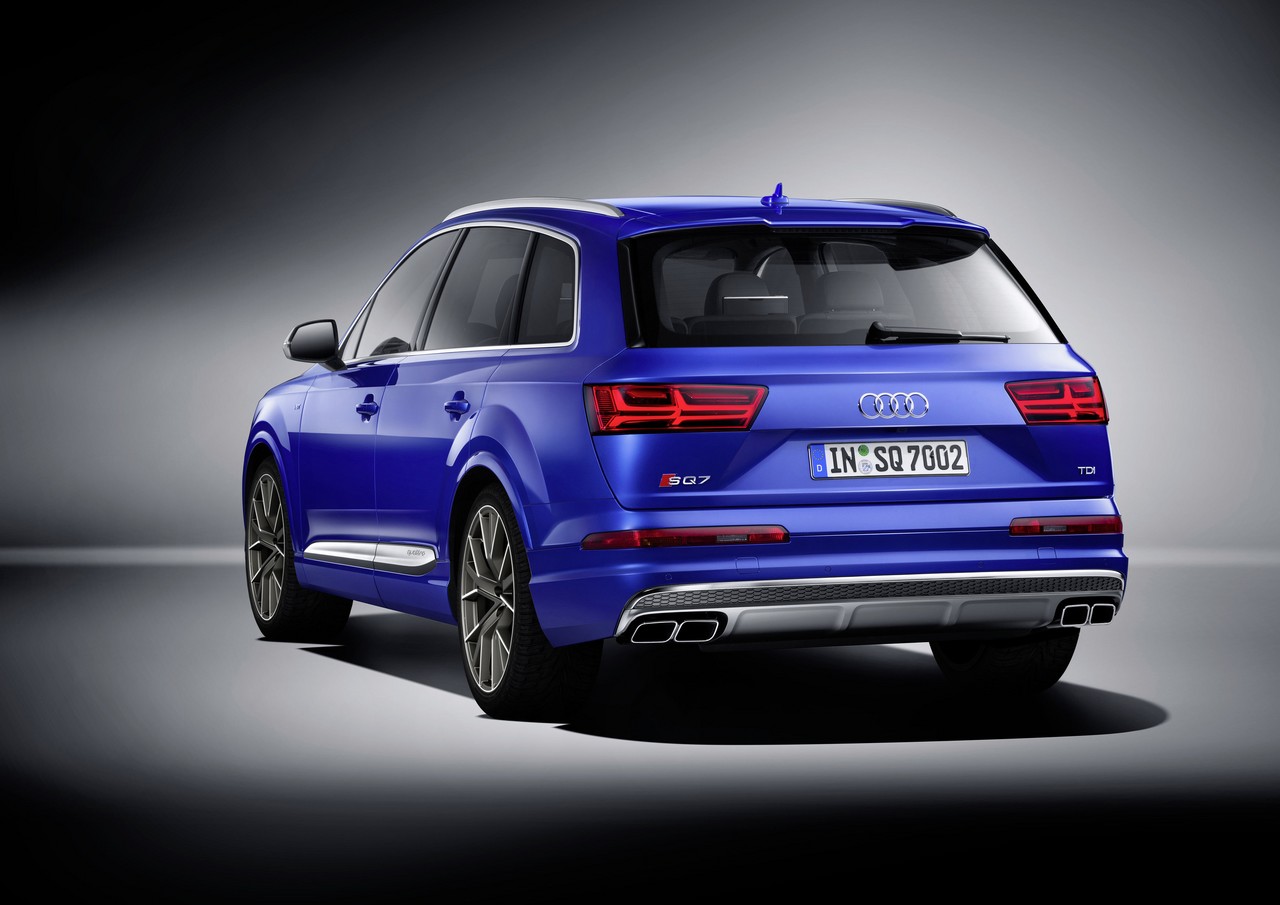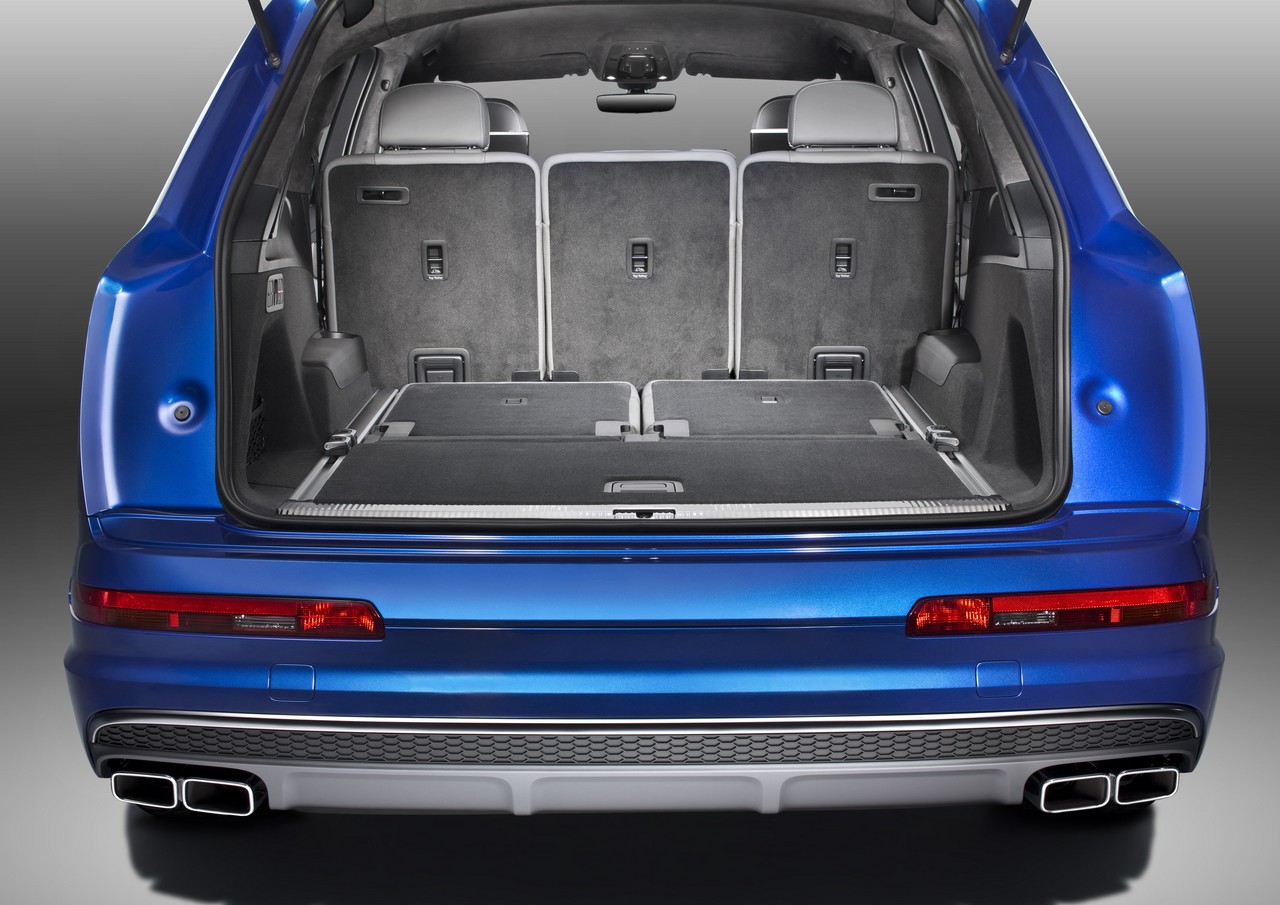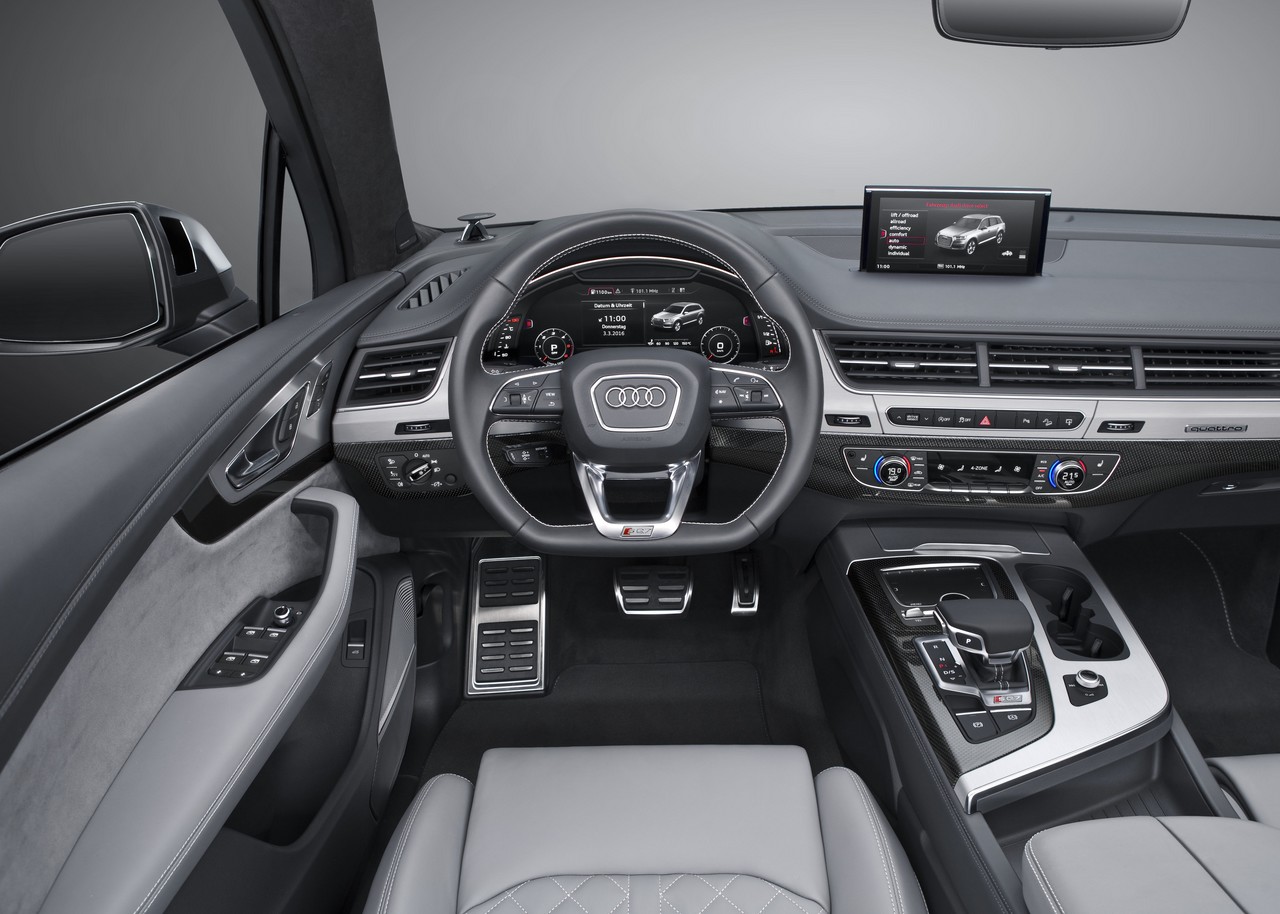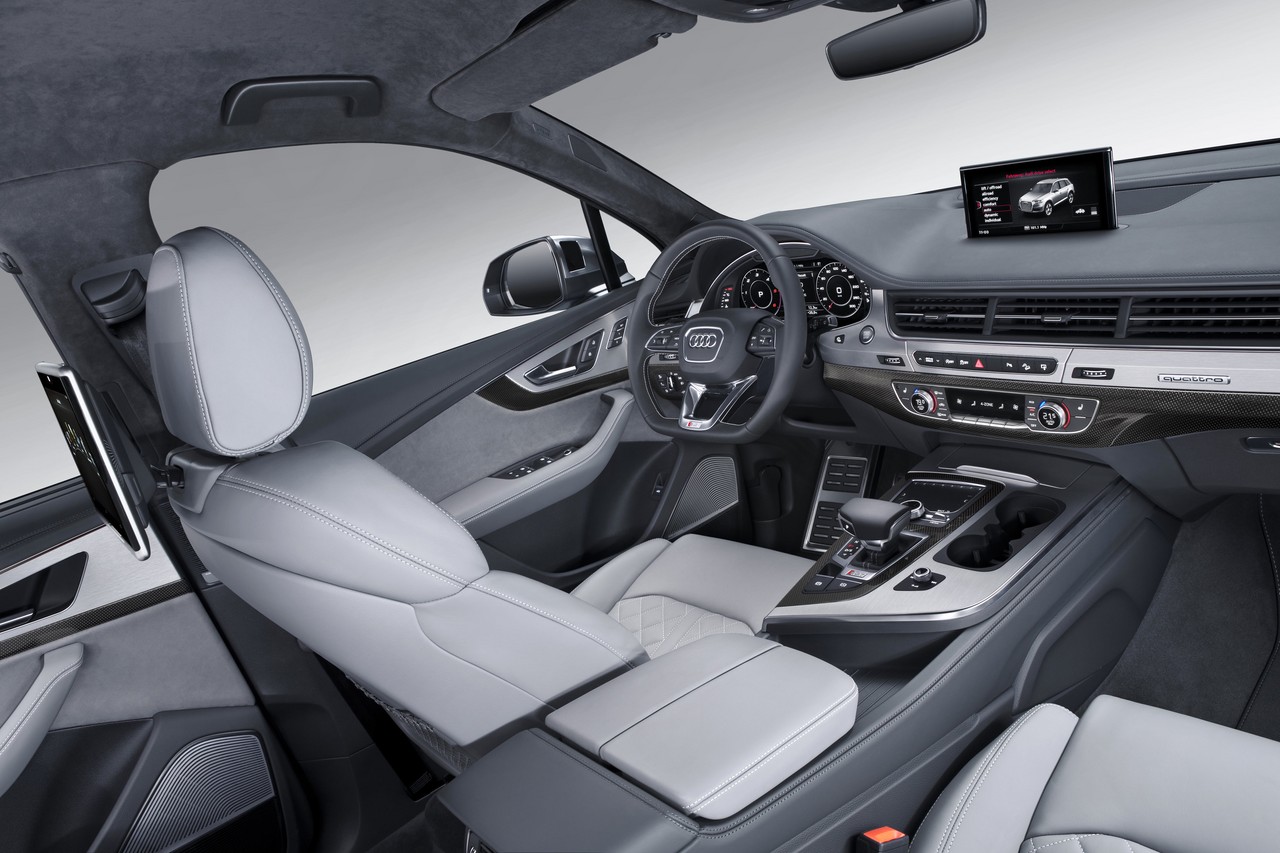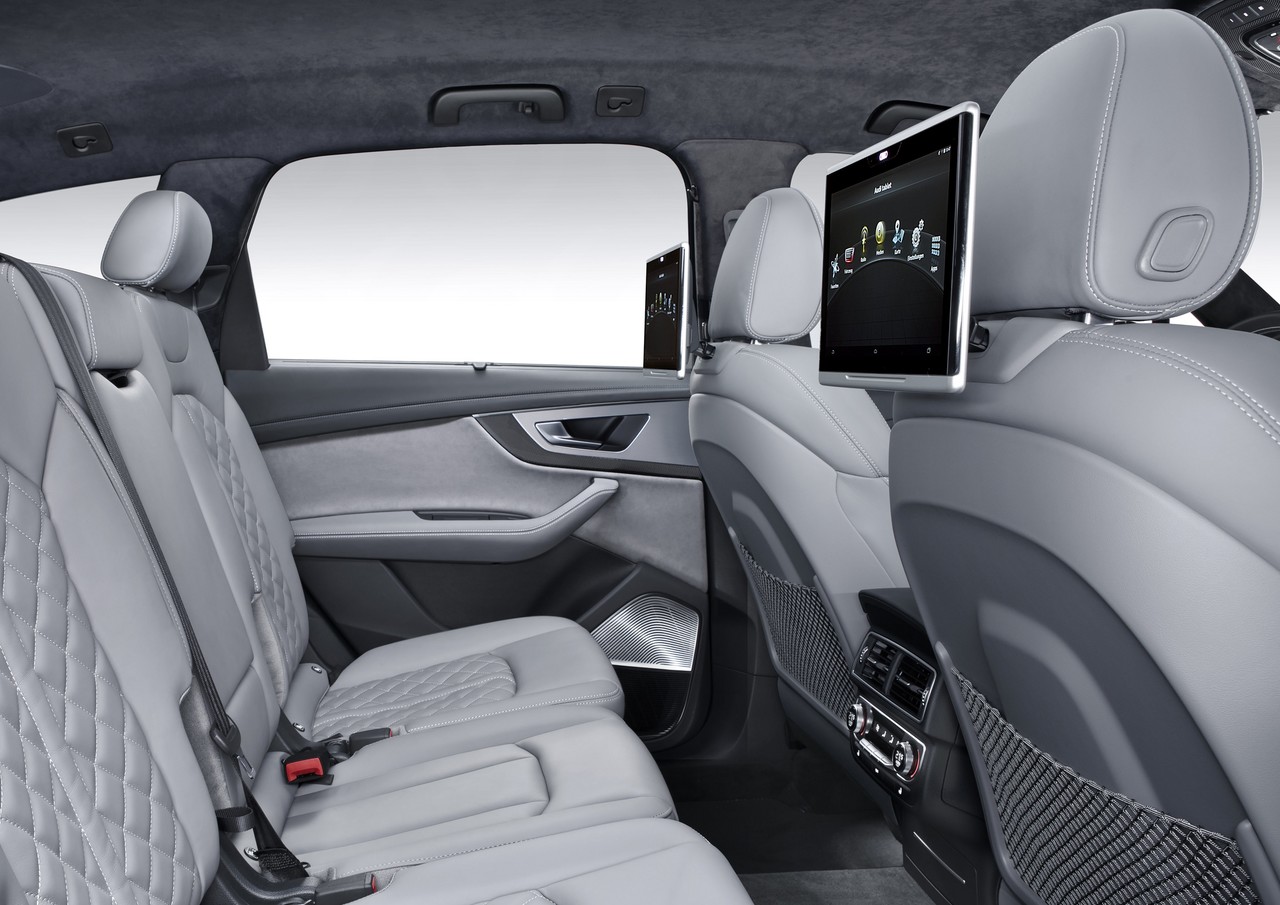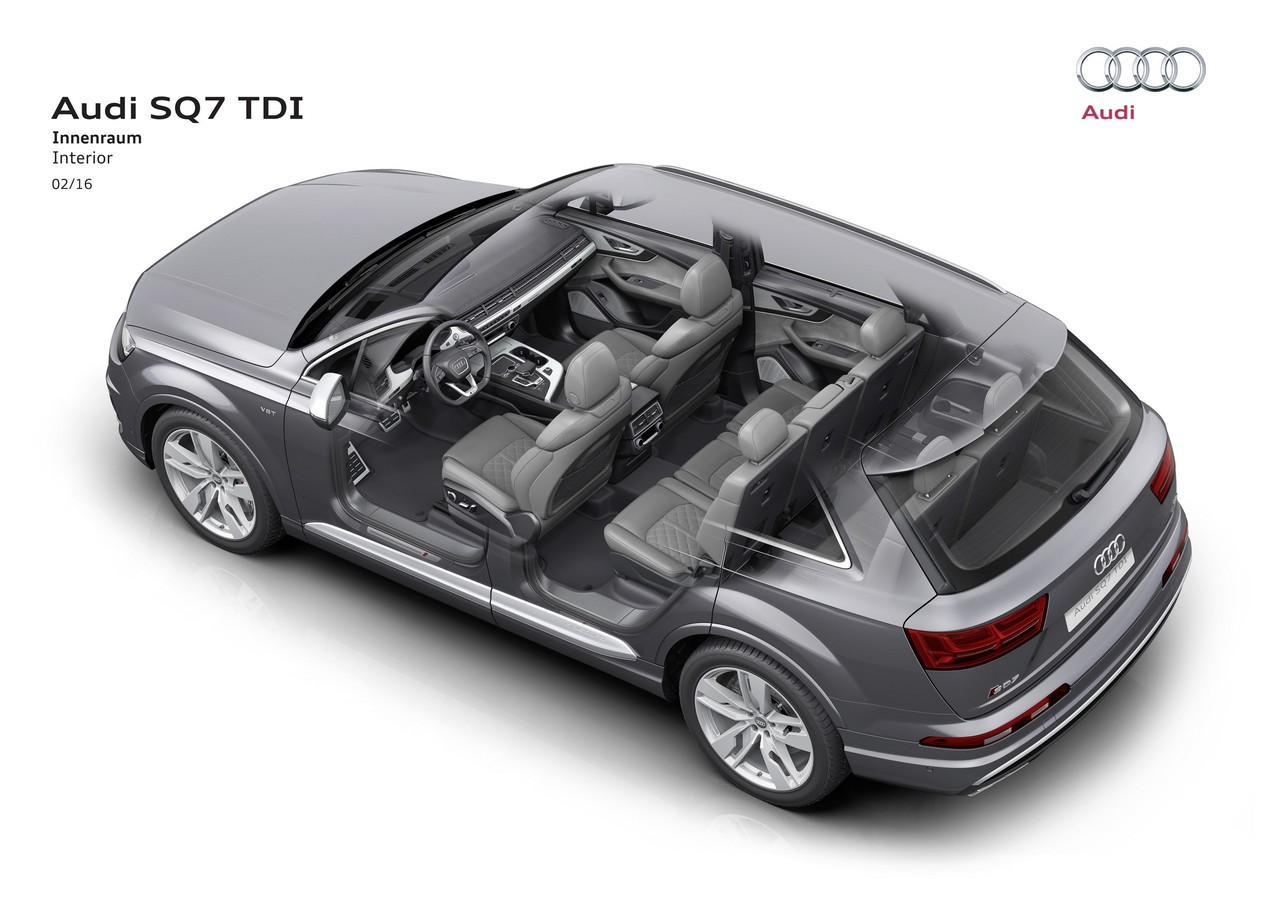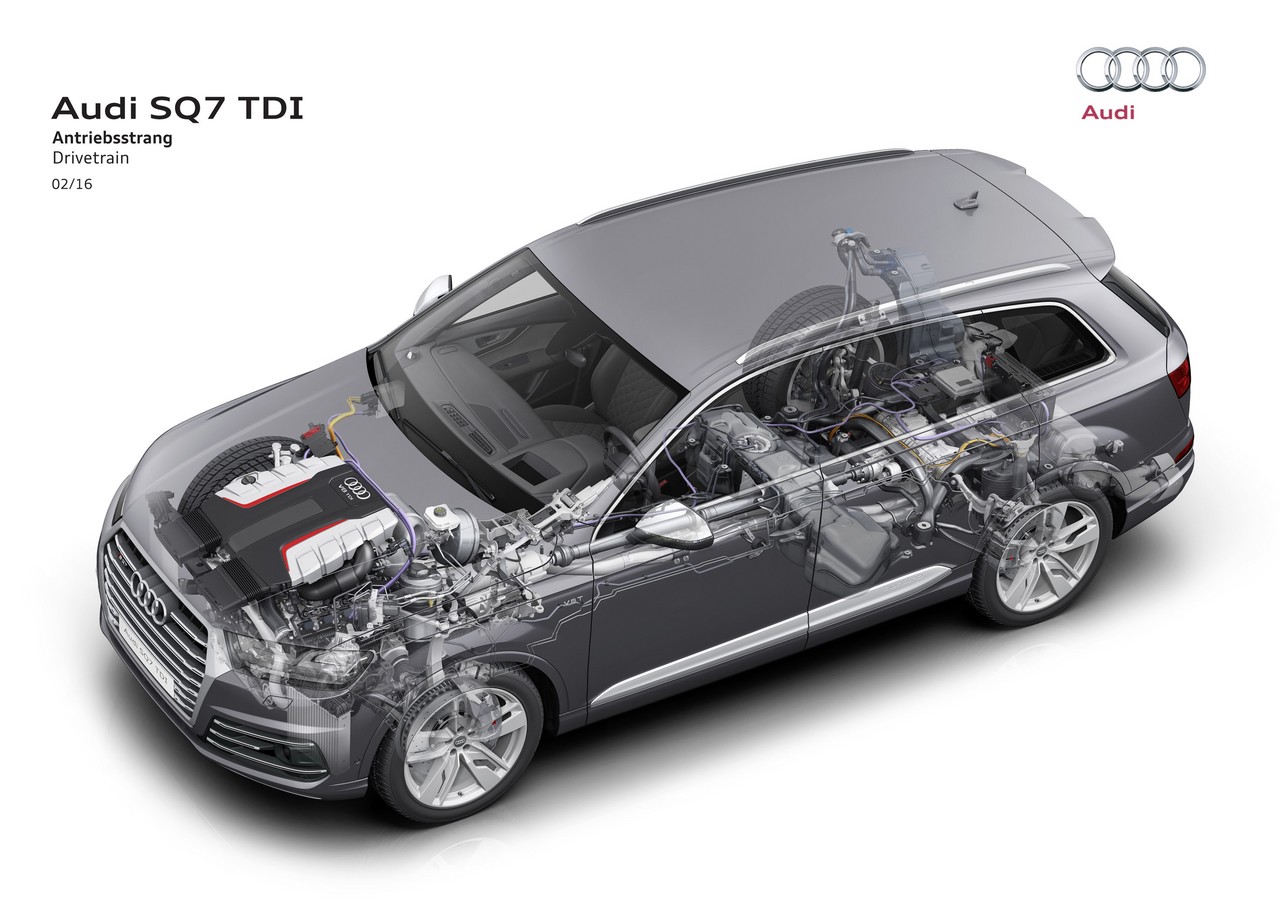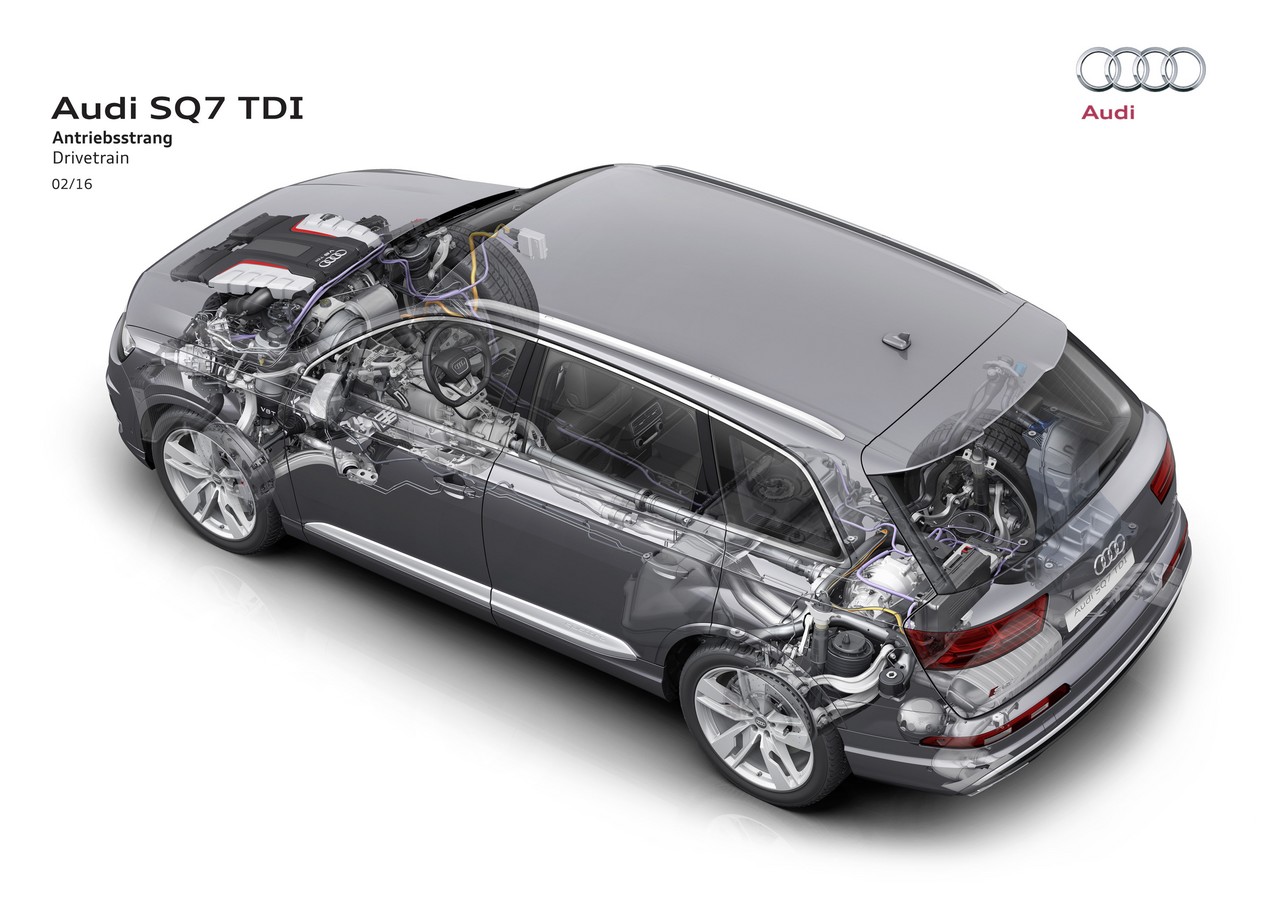
- Extraordinary straight-line grunt and flexible performance
- Impressive ride/handling balance
- High standard of interior fit and finish
- Significantly cheaper than related Bentley Bentayga
- Steering lacks feel and feedback
- Tyre noise
- Handling lacks finesse at the limit
- Third row seats have limited headroom and no air vents
- Limited luggage space
Overview
Released in Australia in December 2016, the Audi SQ7 was a large, seven-seat SUV. Manufactured in Bratislava, Slovakia, the all-wheel drive Audi 4M SQ7 TDI was powered by a 4.0-litre diesel engine which had two sequentially-staged turbochargers; an eight-speed automatic transmission was fitted as standard. Upon its release in Australia, the Audi SQ7 TDI had a manufacturer list price of $153,616 (excluded on-road costs).
4.0 TDI engine: AVS and electric compressor
The Audi SQ7 was powered by Volkswagen Group’s 3956 cc ‘CZA’ diesel engine which had a compacted vermicular graphite cast iron cylinder block, a cast aluminium alloy cylinder head, double overhead camshafts, four valves per cylinder, common-rail injection via piezo injectors which produced an injection pressure of up to 2500 bar, and a compression ratio of 16.0:1. The exhaust valves were positioned on the inside of the engine’s 90-degree ‘V’ and the turbochargers were also positioned inside the engine’s ‘V’.
The 4.0 TDI engine was the first diesel Audi engine to feature the ‘Audi valvelift system’ (AVS). With AVS, the inlet and exhaust camshafts both had two cam contours per side –
- On the inlet side, the low-lift cam contour favoured low-speed torque, while the high-lift contour provided greater power for high engine speeds; and,
- For the exhaust side, AVS activated the second turbocharger since the exhaust streams from the exhaust valves were hermetically separated (i.e. each set of exhaust valves drove one turbocharger). At lower engine speeds, one valve per cylinder remained closed, so that the full exhaust stream flowed to the active turbocharger. When load and engine speed increased, AVS opened the second exhaust valves to direct flow to and activated the second turbocharger.
Maximum boost pressure for the Audi SQ7 TDI was 2.4 bar.
To minimise turbo lag, the 4.0 TDI engine had an electric-powered compressor (EPC) which, according to Audi, was a world first in a production vehicle. The electric powered compressor was located downstream of the intercooler and could be activated to generate boost pressure in less than 250 milliseconds. Driven by a compact electric motor, the compressor wheel could spin at up to 70,000 rpm.
The power for the EPC, which reached a maximum output of 7 kW, was provided by an electrical sub-system which drew power from a 48 volt lithium-ion battery that was mounted beneath the luggage compartment; the battery had a nominal energy content of 470 watt-hours and peak output of up to 13 kW. Furthermore, a DC/DC converter connected the 48-volt and 12-volt electrical systems. The battery was charged by a MOSFET (Metal Oxide Semiconductor Field Effect Transistor) generator; this sub-system was also used for the electromechanical active roll stabilization (EAWS) mechanism (where fitted).
For emissions control, the CZA engine had a NOx oxidating catalytic converter and a downstream SCR catalytic converter which was integrated into the diesel particulate filter and injected AdBlue into the exhaust gases.
The Audi SQ7 TDI could accelerate from rest to 100 km/h in 4.9 seconds and had an electronically limited top speed of 250 km/h. Over the combined ADR 81/02 test cycle, fuel consumption was 7.2 litres per 100 km (190 gm CO2per km).
| Engine | Trans. | Peak power | Peak torque | |
|---|---|---|---|---|
| Audi SQ7 | 3956 cc CZA biturbo diesel V8 | 8sp auto | 320 kW at 3750-5000 rpm | 900 Nm at 1000-3250 rpm |
quattro all-wheel drive (AWD) system
The Audi SQ7 had a self-locking centre differential that was integrated into the housing of the eight-speed automatic transmission, In normal conditions, the centre differential provided a 40:60 front:rear torque split. In the event that a wheel lost traction, up to 70 per cent of available torque could be directed to the front axle or 85 per cent to the rear axle.
The AWD system operated in conjunction with a torque vectoring function. When cornering at speed, the torque vectoring control software provided targeted braking to the inside wheels to reduce understeer.
Dimensions and body
The Audi 4M SQ7 was 5069 mm long, 1968 mm wide, 1668 mm tall and had a 2996 mm long wheelbase; its drag coefficient was 0.337 Cd with the standard ride height. Inside, seven seat Audi SQ7 models had a cargo volume of 235 litres with all seats upright and 700 litres with the third row seats folded.
The Audi SQ7 TDI had an unladen weight of 2330 kg (excludes driver and fluids).
Suspension
The Audi SQ7 had five-link suspension front and rear with adaptive air springs. In the Audi 4M Q7 , the air suspension enabled the body to be lowered by up to 30 mm when driving at highway speeds for greater aerodynamic efficiency and raised by up to 60 mm for increased ground clearance when driving off-road.
As an extra-cost option, the Audi SQ7 could be specified with an electromechanical active roll stabilisation system where a compact electric motor with a three-stage planetary gearbox separated the two halves of the stabiliser. On an uneven road surface, the two halves of the stabiliser were decoupled for improved ride comfort. During sporty driving, however, the tubes were interconnected and twisted against each other to reduce body roll. Furthermore, the front and rear stabilizer bars could be adjusted independently of each other.
Steering
The Audi SQ7 had rack-and-pinion steering with speed-sensitive electric assistance; the steering ratio was 15.8:1, while the Audi SQ7 had a turning circle of 12.4 metres.
As an extra-cost option, the Audi SQ7 could be specified with rear-wheel steering whereby the rear wheels turn in by as much as five degrees. At lower speeds, the rear wheels turn in the opposite direction to the front wheels to reduce the turning radius. At higher speeds, however, the wheels would turn in the same direction to reduce yaw for greater stability.
Safety equipment
Standard safety equipment for the Audi SQ7 included dual front airbags, front and second row seat-mounted side airbags, curtain airbags for front and second row occupants, ABS, electronic brake force distribution, brake assist, electronic stability control, traction control and front seatbelts with pre-tensioners and load limiters.
For Australia, the Audi SQ7 was fitted – as standard – with the following active safety technologies:
- Audi pre sense front: operating at speeds up to 85 km/h, Audi pre sense city used a windscreen-mounted front camera to scan the road ahead for other vehicles and pedestrians up to 100 metres away. If there was a risk of a collision, the driver would receive a series of warnings. If the driver failed to respond, full braking force could be applied autonomously. At initial speeds of up to 40 km/h, collisions could be prevented; at higher speeds (up to 85 km/h), the severity of the collision would be reduced;
- Audi active lane assist: operating at speeds in excess of 65 km/h, a video camera could detect lane markings. If the vehicle approached a lane marking without indicating, the steering system would make automatic adjustments to keep the vehicle in its lane. The steering wheel could also vibrate to warn the driver;
- Audi side assist: used two radar sensors to monitor the area 70 metres behind the vehicle during lane change manoeuvres at speeds over 15 km/h. If there was a vehicle in the driver’s blind spot or an approaching vehicle was detected, the driver would be alerted by a warning LED in the respective door mirror. If the driver activated the turn signal, the LED would flash several times at high frequency;
- Audi pre sense rear: if a rear-end collision was anticipated, the front seats would be moved into the safest position for a collision;
- Adaptive Cruise Control (ACC): using two front radar sensors and the camera, ACC could maintain a specified distance between the Audi SQ7 and the vehicle ahead. Furthermore, ‘Audi drive select’ can be used to adjust the rate of acceleration and other control dynamics;
- Stop&Go with traffic jamp assist: an extension of ACC, ‘Stop&Go’ operated at speeds of 65 km/h and could bring the vehicle to rest. Once traffic started moving again, the Audi SQ7 would automatically accelerate;
- Exit warning: activated when the vehicle stopped moving and could warn occupants if vehicles were approaching from behind by illuminating red fibre optics in the door-opening mechanism as the doors were opened;
- Rear cross-traffic assist: when reversing at low speeds, rear cross-traffic assist used the rear radar sensors to detect approaching traffic. If approaching traffic was detected which could cross the vehicle’s path, the driver would receive warnings (visual, acoustic and a brief, jolting application of the brakes);
- Multi-collision brake assist: following a collision, the brakes would be applied automatically to reduce vehicle speed and the risk of subsequent collisions; and,
- Turning assistant: operating at speeds between 2 km/h and 10 km/h when the indicator was activated, the ‘turning assistant’ monitored oncoming traffic. In potentially dangerous situations, the brakes would be applied to prevent the turning manoeuvre.
Euro NCAP testing
In Euro NCAP crash testing , a left-hand drive Audi 4M Q7 3.0 TDI quattro received a five star safety rating which included a 94 per cent adult occupant protection rating and an 88 per cent child occupant protection rating.
Brakes
As standard, the Audi SQ7 had 400 mm by 38 mm ventilated front brake discs and 350 mm by 28 mm ventilated rear discs.
Features: Audi SQ7
As standard, the Audi SQ7 was equipped with Audi’s ‘MMI navigation plus’ system which included an 8.3-inch colour display, navigation system with 3D maps and live traffic updates, integrated voice control, MMI touch control panel, digital radio tuner, a single CD/DVD player, two SDXC card readers and 10 GB flash memory for media storage. Other infotainment features included the Audi smartphone interface, Bluetooth mobile phone connectivity and audio streaming, and ‘Audi connect’ which included a Wi-Fi hotspot and Google services. The Audi SQ7’s audio system consisted of a Bose 3D Surround System with a 558 watt 15-channel amplifier, nineteen speakers (including centre speaker and subwoofer).
Other standard features for the Audi SQ7 included 20-inch alloy wheels with 285/45 R20 XL tyres, Valcona leather upholstery with ‘S’ embossing, power adjustable and heated front seats, four-zone climate control air conditioning, cruise control with speed limiter, LED headlights, dusk-sensing headlights, rain-sensing wipers, 35:30:35 split and folding second row seats, 50:50 split and power folding third row seats, a leather covered sports steering wheel with gearshift paddles, remote central locking, power adjustable mirrors with auto-dimming and folding functions, power windows, tilt and telescopic steering wheel adjustment, an auto-dimming rear view mirror, a power-operated tailgate with gesture control, driver memory settings (for seat and mirror positions), ambient lighting, tyre pressure monitoring, a trip computer, an alarm and immobiliser.
Inside, the Audi SQ7 featured the ‘Audi virtual cockpit’ which consists of a 12.3-inch TFT display for the instruments (i.e. the speedometer and tachometer) which can also be configured to show navigation maps. As standard, the Audi SQ7 was also fitted with a colour head-up display which projected information such as vehicle speed, navigation instructions and safety warnings.
Like the Audi 4M Q7, the Audi SQ7 was fitted with Audi’s ‘parking system plus’ which includes twelve ultrasonic sensors, 360 degree surround and top view cameras, and automated steering for both perpendicular and parallel parking manoeuvres.
2019 Audi SQ7 Black Edition
The Audi SQ7 Black Edition was released in Australia in April 2019. Visually, the SQ7 Black Edition could be identified by its 22-inch ‘Audi Sport’ wheels, high-gloss ‘titanium black’ exterior package, carbon-fibre door mirror housings and metallic paint finishes. Inside, standard features for the SQ7 Black Edition were extended to include diamond pattern contrast stitching, carbon-fibre interior inlays and a panoramic sunroof.
Specifications
Related links
